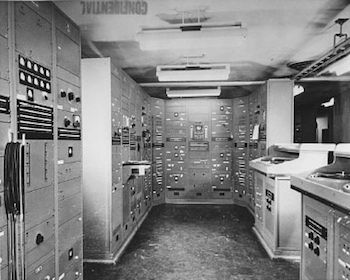
If you are a fan of the unbreakable SIGSALY - you will definitely find the article (linked below) by scientist/inventor Jon D. Paul very interesting. After 20 years of researching digital technology and digital media, especially the SIGSALY, Mr. Paul explored the process of recreating a key component of the SIGSALY - the quantizer, using vintage parts. SIGSALY scrambled voices using a one-time random digital encryption key, but before the digital key could be applied, the quantizer converted the speaker's voice from analog to digital.
*Thank you to our friends on Twitter for alerting us to this excellent article!
About the Author
Jon D. Paul has been an EE and inventor since 1968, focusing on real-time signal processing, audio, cinema, telecommunications, and power conversion. He is an expert on cipher machines, speech encryption, and the history of technology. Paul is a member of the Association des Réservistes du Chiffre et de la Sécurité de l’Information (Association of Reservists of the Ciphers and Security of Information), frequently contributing to museum exhibitions and technical conferences in France.
The beginning of the article is included below. Please read the full article online via spectrum.ieee.org where you can also see photos and diagrams provided by Mr. Paul.
"Rebuilding a Piece of the First Digital Voice Scrambler:" This 1943 analog-to-digital converter helped make an unbreakable code - for IEEE Spectrum
by Jon D. Paul
In the years before World War II, German intelligence could decode band-scrambled U.S. radiotelephone conferences. After Pearl Harbor, an unbreakable speech scrambler was developed with top priority, and by 1943, it was deployed. Known as SIGSALY, the device pioneered many advances critical to modern digital media technologies, including spread-spectrum communications and the first use of pulse-code modulation (PCM) to transmit speech.
SIGSALY was top secret, so even today information about the details of its construction are hard to come by. I’ve spent 20 years researching the history of digital technology and digital media, especially SIGSALY. I searched IEEE and U.S. National Security Agency (NSA) journals, and Bell Telephone Laboratories patents. Finally, I found Lieut. Donald Mehl, a WWII SIGSALY technician, who gave me invaluable assistance. In 2015, I realized that it might be possible to re-create a key element of SIGSALY—the quantizer—using vintage parts....... READ THE FULL ARTICLE VIA IEEE.ORG

